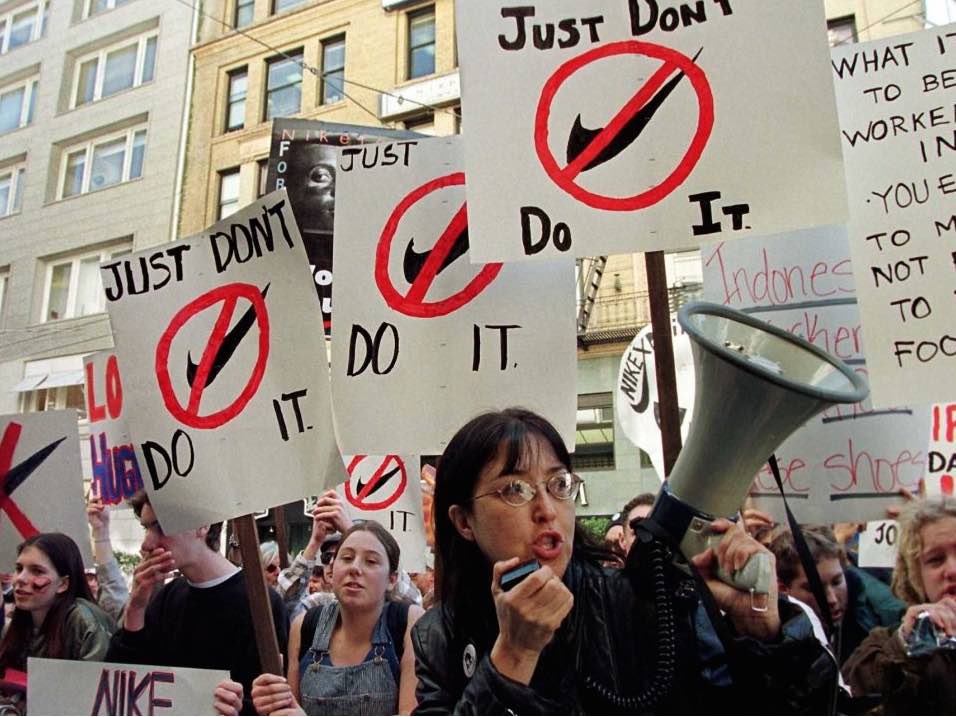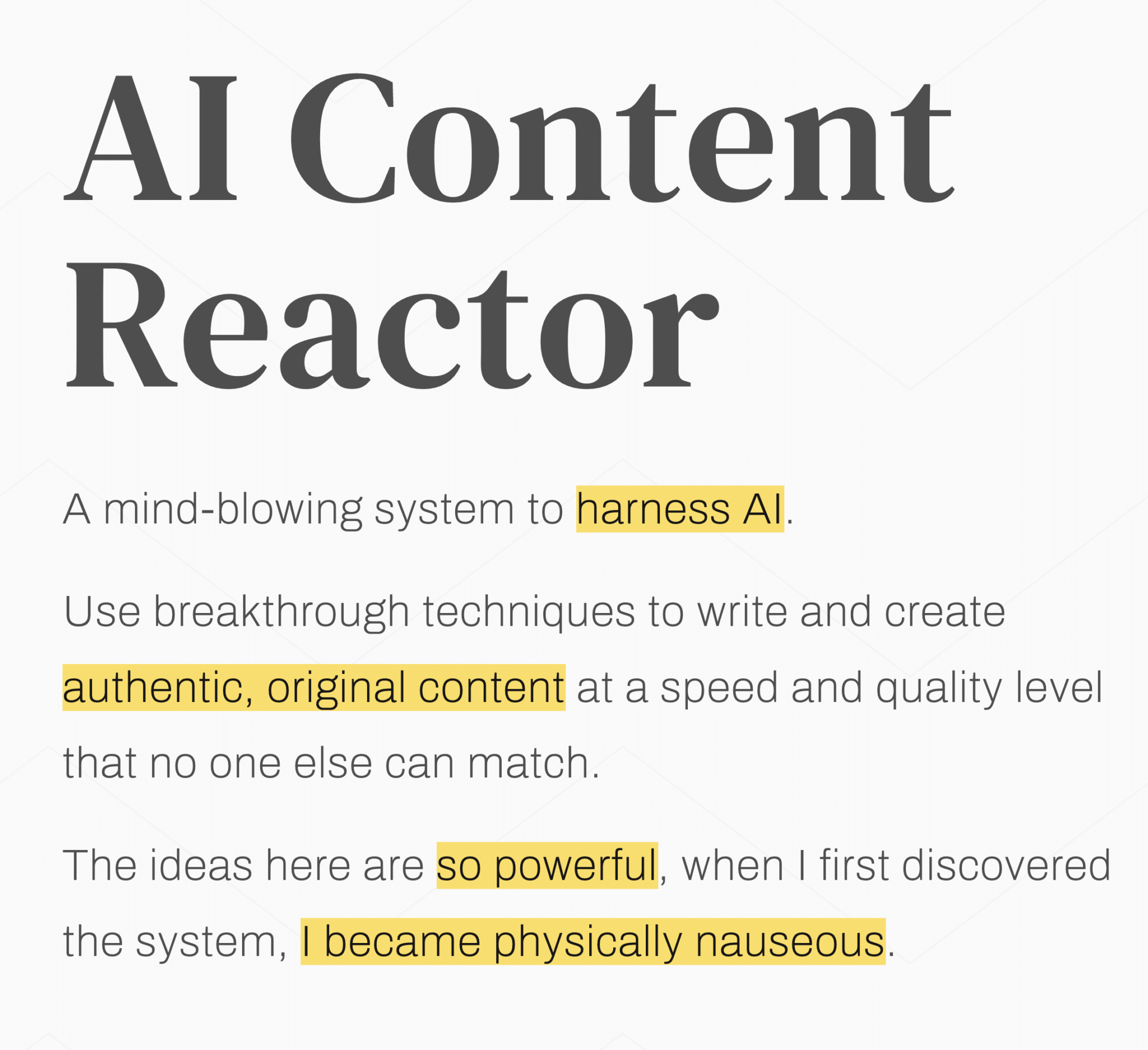A lot of people in the online industry forget that marketing and advertising has to start with a voice. I can’t tell you how many times I’ve worked with small or large companies that outsource their content because they have no clue what they’re doing. -Or the ones that do keep it in house hand it over to a two-year marketing associate who’s a great writer, but has no idea what the long term goals of the company are.
We’re all so worried about keywords, context relevance and ranking that we forget the most important part of attracting readers and, ultimately, clients: the culture. Your company’s culture, believe it or not, speaks volume of how you’re acting and reacting to the outside forces that be.
When you bring this up to your in-house VP of Marketing, more often than not they don’t understand how culture will translate into more sales. After all, it’s their job to show the ROI, which means they’re focused on reach and frequency. Rightly so, since you’re selling a product. But what eludes them (and many others) is the idea of company culture – how a company’s brand image reflects a company’s consumers. Your brand. Your consumers.
So what is brand image? Well, think about a Rolex watch. Then, think about how you’d feel owning a Rolex watch. Then, think about why you’d feel that way. Those feelings, whatever they are, are your image of the Rolex brand. Your perception of how good (or bad) a brand of watch they sell.
The problem with brand image is that brand image starts being built by consumers from the first time they see the first mention of your company.

Let’s take BP Oil, for example. Granted, this is an extreme example, but imagine if the oil spill in the Gulf of Mexico was the first you’d heard of the company. –And now it’s all back in the news, upfront and personal, when I bet BP wishes it would just… disappear.
So now, BP has a problem with their brand image. I mean, oil is oil, right? BP petrol (as the UK’s like to say) probably isn’t any better or worse than, say, Conoco. Yet, the stockholders became unsure about how steady a company BP was and stocks started dropping. On top of that, people began picketing the gas stations that ran BP gas.
You see, the consumers’ vision of the BP company, culture and product became very, very bleak. Their brand image became a walking skeleton, thanks to content outflow like this:
“Tony Hayward, the beleaguered chief executive of BP, has claimed its oil spill in the Gulf of Mexico is ‘relatively tiny’ compared with the ‘very big ocean’.” – “BP boss admits job on the line over Gulf oil spill,” The Guardian
An article in the New York Times further pointed to the stand that BP took:
“Mr. Hayward and the company have repeatedly played down the size of the spill, the company’s own role in the April 20 explosion of the Deepwater Horizon, and the environmental damage that has occurred. At the same time, they have projected a tone of unrelenting optimism despite repeated failures to plug the well.”
The company even went so far as to try and hijack the search results by buying up several related search terms. It’s ironic that the CEO was pushing a company culture of “safety.”
Now, you may be thinking, “Gabriella, what does all this have to do with brand, and culture, and content?” Simply this: the content they put out didn’t build a positive brand image. It didn’t go to support their supposed company culture. Instead, it was a cover-up; it was fake, it was lies, and consumers are getting smart enough to sniff these things out.
You Can’t Fake Culture; You Have to Live It

You can’t tell people you run a fun company and then have workers buried in tiny, depressing cubicles. –And believe me, if you’re projecting a fun brand image and your consumers find out your employees are working in sweatshops, a whole bunch of unpleasantness will can hit the fan.
This is something Nike knows well. It was quite a shock to find out that Nike, a company that advertises “Just Do It” and promises the not-so-subliminal feeling of freedom, used sweatshops and child labor to make its products. Tsk, tsk, Nike.
However, Nike turned it around. They said, publicly (i.e. with content, whether verbally with speeches or non-verbally with the written word), that they were changing the company culture. – And then they did it.
Establish a Vision and Stick to It
What is the vision you want your consumers to have? What feeling do you want them to get when they think of your company and product? Whatever it is, this needs to be integrated into your content marketing strategy. Your vision should have e a single purpose that everyone involved will understand. A mutual commonality, that will unite the purpose and goals of the company.
This is a unified brand image that will be apparent in all your online real estate. Your video, your blog posts, your images, etc. If you’re shooting for leadership and being looked at as an expert, then that’s the goal. Write content that informs and educates, and share it with your readers.

Apple is a good, living example. There’s an excellent case study at Marketing Minds, “Apple’s Branding Strategy”. I highly recommend reading it. In the case study, the author writes:
“Apple has a branding strategy that focuses on the emotions. The starting point is how an Apple product experience makes you feel. The Apple brand personality is about lifestyle; imagination; liberty regained; innovation; passion; hopes, dreams and aspirations; and power-to-the-people through technology.”
If that seems a little extreme, try looking for some commentary on a Windows Phone review that doesn’t have at least one or two die-hard Apple fans ranting about how much Microsoft sucks. The same can be said for iPhone reviews. If you’re an Apple fan, it seems you can’t like anything about Microsoft, and vice versa.
Apple established a vision of liberty from technology while still being able to use it. Allow me one more excellent quote from the study:
“The company is careful to maintain its brand values as it engages with corporations: it positions itself as facilitating the use of the individual’s devices of choice…”
Once you’ve established your vision – what you want your brand image to be – be careful to maintain it.
Not everybody in the company is going to develop the content for your site, but that shouldn’t stop you from having brainstorming sessions. Get your engineers involved. Tap the brains of your Human Resources employees. These people are part of your culture, and their input is valuable. You’ll be surprised at how much you’ll benefit by involving other departments in your content output.
An article on an SEO site can’t be complete without mentioning Google. Google’s company culture is a great example of mingling different departments. Let me quote:
“We strive to maintain the open culture often associated with startups, in which everyone is a hands-on contributor and feels comfortable sharing ideas and opinions.”
Now, there’s no way you can say that Google is an unsuccessful company. They’re successful in more ways than one. Next time you have a few minutes, look over “Life at Google” on Google Careers. Department integration is the name of the game.
In Conclusion: Don’t Forget Your Brand Image When Developing Your Content Marketing Strategy
There are thousands of examples, both positive and negative, in the business world. Businesses that crashed because they didn’t manage their image well. They succeeded because they kept their content output on track. Businesses that succeeded beyond all expectations, because they never failed to remember their brand image in every piece of content they put out, whether in social media, blog posts, videos, or the press statements of their CEO.
Last week, I posted “An Expert Guide to Content Strategy,” and this ties in perfectly. Don’t forget your brand image when developing your strategy. Don’t forget that you’re “fun,” and put out nothing but serious stuff on serious media. Oreo, for example, puts up silly Vines as part of its content marketing strategy.
Most importantly, never, ever forget that content plus company culture equals brand image – and a positive brand image means loyal customers for years to come.








































3 Responses
Hi, regarding click-bank – are there any ideas about improving conversions on a non-niche webpage? I own a document sharing webpage and as such it’s extremely to match products to the visitor. Best wishes
Take a look at your GA to see what/where/how people are getting to your document sharing. There are so many things you can do. But let’s start with – Know Who You’re Trying to Persuade…Is this content relevant to them? Use tangible verbs in your CTA. Recommend related products. Include consumer review when you can. Are your forms easy to fill? What does your conversion funnel look like?.
Test your Unique Value Proposition (UVPs). Requiring registration in order to buy puts people off. I could go on, but that would mean writing another post…but the good news is we have Oodles of posts about conversions.
these ae realy awesome marketing tips,these will help me out for the marketing of my online product.